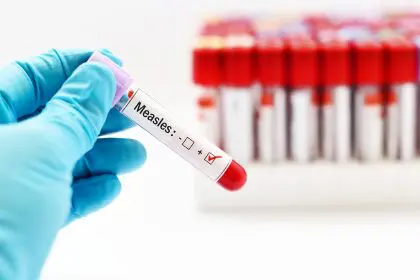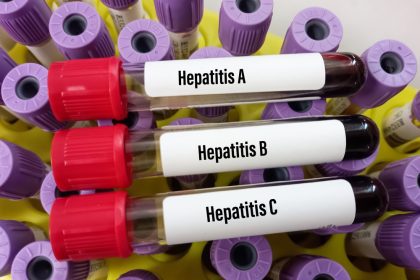Recent data from the Centers for Disease Control and Prevention reveals an unprecedented increase in norovirus outbreaks across the United States, prompting renewed focus on prevention and control measures. As communities grapple with this surge in cases, understanding these seven essential facts becomes crucial for public health.
Seven essential facts driving the current crisis
- Record-breaking outbreak numbers: The latest CDC reports confirm 91 suspected or confirmed norovirus outbreaks during the first week of December, more than double the typical 41 outbreaks recorded in previous years. This dramatic increase represents the highest number of cases recorded in a single week since tracking began in 2012, affecting millions of Americans across all age groups.
- Extended contagious period: Healthcare providers warn that infected individuals can spread the virus for up to two weeks after symptoms resolve. This extended period of contagion significantly complicates containment efforts, as people may unknowingly continue transmitting the virus long after they feel recovered. Recent studies indicate that viral shedding occurs even in asymptomatic carriers.
- Remarkable environmental persistence: Laboratory research reveals the virus’s extraordinary survival capabilities, persisting on hard surfaces for up to 12 hours and in carpet fibers for as long as 12 days. A single contaminated surface can spread the virus to 40-60 percent of commonly touched areas within four hours, creating sustained transmission risks in shared spaces.
- Severe dehydration risks: Hospital data indicates that dehydration accounts for 70 percent of norovirus-related hospitalizations. This complication particularly affects vulnerable populations, including young children, elderly individuals, and those with compromised immune systems. Medical professionals emphasize the importance of proper hydration during infection.
- Economic burden: The financial impact extends far beyond individual healthcare costs. Direct medical expenses exceed $2 billion annually in the United States, while indirect costs from lost productivity and business disruption reach an estimated $60 billion yearly. These figures highlight the substantial economic consequences of norovirus outbreaks.
- Ineffective standard prevention: Common cleaning products and alcohol-based sanitizers prove inadequate against norovirus, necessitating specific EPA-approved disinfectants for effective elimination. This limitation significantly impacts prevention efforts in schools, workplaces, and healthcare facilities, requiring specialized cleaning protocols.
- Global health concern: International surveillance reveals increasing norovirus activity worldwide, with certain strains showing enhanced resistance to standard disinfection methods. This global trend suggests potential viral evolution and highlights the need for coordinated international response efforts.
Prevention and protection strategies
Healthcare experts recommend comprehensive prevention approaches, emphasizing proper hand hygiene with soap and water rather than alcohol-based sanitizers. Environmental cleaning requires specific disinfectants proven effective against norovirus, with particular attention to frequently touched surfaces.
Impact on vulnerable populations and treatment
Medical experts identify several high-risk groups requiring particular attention during norovirus outbreaks, including young children under age 5, adults over 65, immunocompromised individuals, pregnant women, and people with chronic health conditions. These vulnerable populations often need more aggressive treatment approaches and additional precautions to prevent complications. Healthcare providers emphasize the importance of early intervention and careful monitoring for these groups.
Workplace adaptations and community response
Organizations across the country have strengthened their illness policies in response to increasing norovirus cases. Companies now offer extended paid sick leave and remote work options during outbreaks, while implementing enhanced cleaning protocols and comprehensive employee education programs. Regular surface disinfection has become standard practice in most workplaces, particularly in shared spaces and high-traffic areas. These measures work alongside broader community initiatives, as local health departments coordinate public education campaigns and collaborate with healthcare providers to support affected populations.
Treatment guidelines and future outlook
While norovirus has no specific cure, medical professionals have established clear treatment protocols focusing on symptom management and recovery support. Patients are advised to maintain proper hydration, get adequate rest, and use appropriate over-the-counter medications while maintaining isolation during the illness period. Public health officials anticipate continued high case numbers through early spring, prompting enhanced surveillance efforts and preparation for potential case increases. Advanced tracking systems enable healthcare providers to monitor outbreak patterns and adjust response strategies accordingly. Through coordinated efforts between healthcare systems and community organizations, officials work to minimize the impact of this challenging viral outbreak while protecting the most vulnerable members of society.
Conclusion
Understanding and implementing proper prevention measures remains crucial as communities face this significant health challenge. While most healthy individuals recover within days, the virus’s high contagiousness and potential severity require continued vigilance and coordinated response efforts.
The combination of extended contagion periods, environmental persistence, and inadequate standard prevention measures creates particular challenges for containment. However, informed communities implementing proper prevention strategies can effectively reduce transmission risks and protect vulnerable populations during this outbreak period.

















